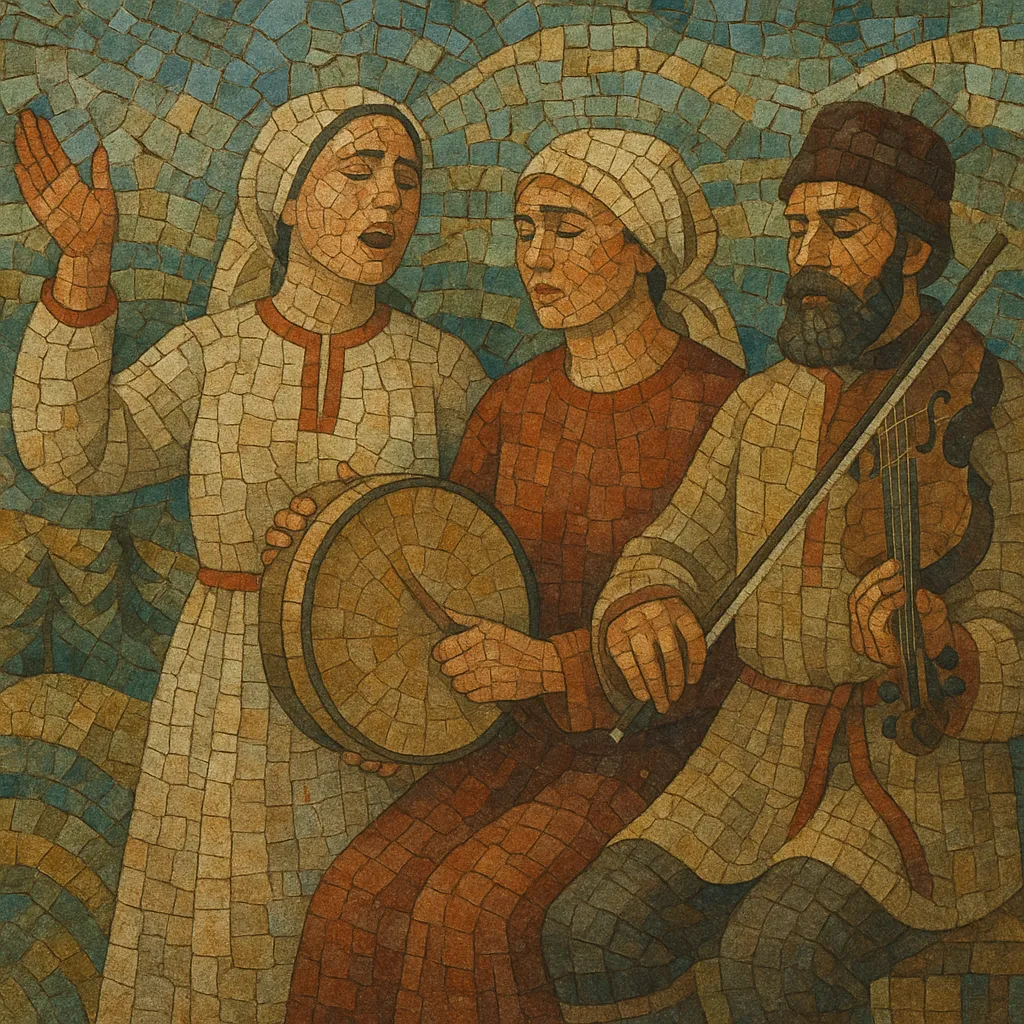Komi folk music is the traditional music of the Komi peoples (Komi-Zyrian and Komi-Permyak) from the northeast of European Russia. It is primarily vocal, community-based, and closely tied to the Komi language and seasonal ritual life.
Its songs include calendar songs, wedding laments, lullabies, narrative songs, work songs (linked to forestry, river trade, and reindeer herding in Izhma areas), and playful dance refrains. Melodies often have a narrow range, favor speech-like contours, and are sung in heterophony—multiple voices carrying the same tune with individual ornamentation. Drones and bourdon-like sustaining tones are common, while rhythmic clarity rises in dance numbers.
Instrumental practice features locally shared northern Russian and Finno‑Ugric instruments such as garmon (button accordion), gusli/zither types, fiddle, jaw harp (vargan/komus), shepherd flutes (svirel), and the single-reed zhaleika. Dance traditions include circle and line dances with simple duple or mixed meters. The sound world tends toward modal scales (often minor/Dorian), open fifths, and unison-based textures that highlight the communal voice.
Komi folk music grew from oral traditions connected to local cosmologies, nature cycles, and kinship rites. Before Christianization (14th century), songs marked seasonal rituals, hunting, fishing, and pastoral life, carrying incantatory rhythms and laments tied to life-cycle events.
After the Christianization of the Komi by St. Stephen of Perm, sacred repertoires and local hymn traditions interacted with Orthodox practice. While church chant did not replace village music, it coexisted with Komi-language song, and some melodic habits and ritual timings were reshaped by the liturgical calendar.
The 1800s saw ethnographers and local scholars document Komi songs, stabilizing variants into published canons. Fieldwork captured lament traditions, wedding cycles, and northern work songs along the Pechora and Vychegda rivers. Growing contact with neighboring Russian and Finno‑Ugric peoples also widened the instrumental palette (fiddle, garmon, zhaleika).
Soviet cultural policy promoted national song-and-dance ensembles that staged village repertoires as concert pieces. Choral arrangements, choreographed dances, and accordion-led orchestrations professionalized performance, standardizing tunings and forms while preserving many melodies and texts.
After the USSR, language and cultural revival movements revitalized village-based singing circles, school ensembles, and festivals (e.g., Ust-Tsilemskaya Gorka). Contemporary projects fuse Komi melodies with folk-rock, world fusion, and chamber-folk aesthetics, while archives and community workshops ensure intergenerational transmission.


